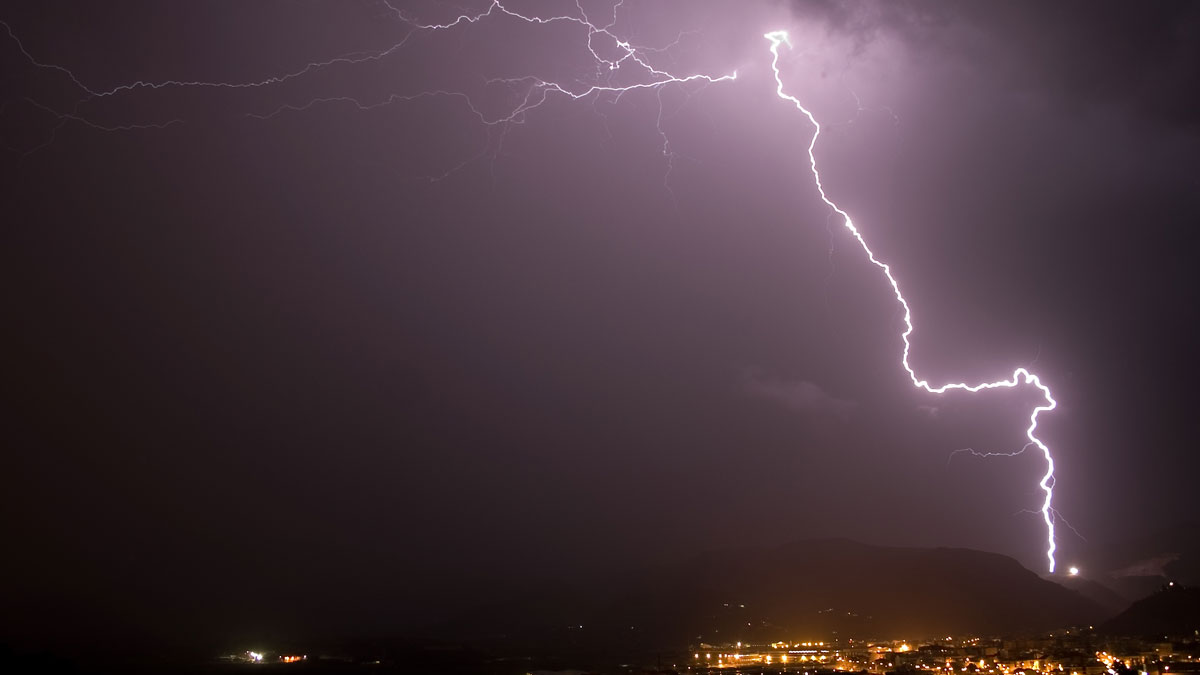For the past 2 years, the COVID-19 pandemic has disrupted nearly every aspect of modern life, but it has also provided scientists with a rare chance to study how the environment responds to reduced human activity. Perhaps one of the most famous examples of this is the pandemic’s indirect impact on global air quality—as more people stayed home, especially during the 2020 lockdowns, the world’s air pollution was significantly reduced, according to Yakun Liu, a postdoctoral researcher at the Massachusetts Institute of Technology.
However, the sharp drop in pollution during this time didn’t just clean the air; Liu noticed that it was also accompanied by unusual meteorological side effects. In new research presented during AGU’s Fall Meeting 2021, Liu and colleagues compared global lightning data with satellite measurements of aerosol optical depth, a proxy for the amount of aerosols in the atmosphere. The researchers found that the reduction in particle pollution corresponded with an 8% decrease in lightning activity over Africa, Europe, Asia, and, to a lesser extent, the Americas.
The correlation between the two is no coincidence. After all, storm clouds require aerosols to form. These microscopic specks of pollution help water molecules condense into larger droplets. The size of these droplets is contingent on the amount of aerosols present, which then determines whether the water falls back to Earth or is uplifted to higher altitudes. In areas where there are greater concentrations of aerosols, the latter is more likely to occur, creating a mixture of supercooled water and ice crystals, two essential ingredients for generating static electricity in clouds. Simply put, when “you increase [the amount of] aerosols, you get a huge increase in lightning activity,” said Tianle Yuan, an associate researcher at NASA Goddard Space Flight Center who was not involved in this study.
Looking Back at Lightning Activity
The relationship between aerosols and lightning activity has long been established. In a 2011 study by Yuan and colleagues, an increase in lightning activity was recorded off the coast of the Philippines, which the researchers attributed to a particle-filled volcanic plume that had wafted over the ocean. Likewise, in a separate 2017 study, University of Washington researchers found that lightning strikes were almost twice as frequent over two of the world’s busiest oceanic shipping lanes because of the aerosol emissions produced by ship engines.
“Aerosol emissions are not only deteriorating the air quality, but [they] may also be influencing the electrical process and triggering more lightning discharges.”
Even more recently, Liu showed that lightning activity jumped by 270% off the coast of Australia, which was caused by the offshore transport of smoke produced by the Black Summer wildfires in late 2019 and early 2020. On the basis of observations and the results of previous studies, Liu concluded that “aerosol emissions are not only deteriorating the air quality, but [they] may also be influencing the electrical process and triggering more lightning discharges.”
Unfortunately, studies such as these frequently share the same limitation: Their scope is often limited to small regions located over the ocean. On the one hand, the data are simplified because the atmosphere over the ocean is less variable. “Oceanic lightning can be a sensitive indicator to assess aerosol effects on lightning characteristics,” explained Liu.
But on the other hand, the aerosol-lightning interactions are much harder to tease out over land, where the connection is muddled by other meteorological factors, such as the urban heat island effect. So even though “studies looking at cities and their surrounding areas tend to support the role of aerosol…[the results are] not conclusive,” said Yuan.
Large-scale studies like the one by Liu and colleagues can mitigate some of the confounding effects that would normally complicate this type of analysis. “It’s a significant contribution to the connection between aerosol and lightning at a global scale,” Yuan said, adding that the part that still needs work is understanding how lightning efficiency increases depending on meteorological conditions, the background aerosol concentrations, and the type of aerosols present. By gathering this information, scientists can better understand how lightning might react to changes in air pollution emission policies. At the moment, Liu and colleagues’ COVID-19 study seems to suggest that without human activities, the level of lightning would be much lower.
In addition, future research can shed metaphorical light on how lightning flashes can, in turn, affect our air quality or climate. For example, they can contribute to the formation of tropospheric ozone, which is both a harmful air pollutant and greenhouse gas.
—Krystal Vasquez (@caffeinatedkrys), Science Writer


